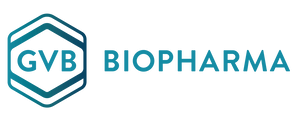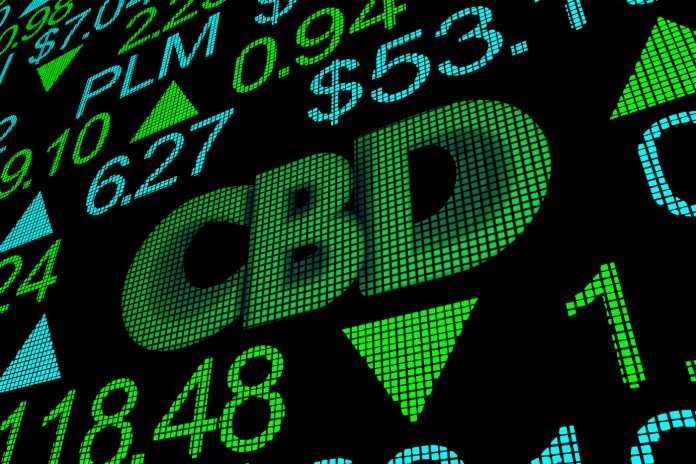If you had known ahead of time that the domestic CBD market would explode in 2017, what would you have done differently? There’s no need to wonder—a new opportunity is now arising that could completely eclipse the CBD boom we’ve witnessed over the past few years.
Due to advanced breeding and extraction technologies, industry-leading cannabinoid manufacturers like GVB Biopharma are gearing up to produce the major non-psychoactive cannabinoids facilitating the rise of CBG, CBN, CBC, and other non-intoxicating cannabinoids as genuine CBD competitors. We predict the cannabinoid market of 2025 will be so different from today’s industry that it will be nearly unrecognizable. Here’s what you need to know to prepare and position yourself accordingly.
The ice cream shop approach to cannabinoids
If, like most people, you’ve gotten interested in the cannabinoid industry over the past few years, you’re used to THC, CBD, and perhaps CBG being the only cannabis constituents widely available. All that is about to change—if it hasn’t changed already.
Long before we reach 2025, consumers will be demanding access to the whole spectrum of cannabinoids available in hemp. When you go into an ice cream shop, you expect to have more choices than chocolate and vanilla. To be successful, ice cream shops must offer a dozen or more flavors, and the same soon will be true for cannabinoid manufacturers.
What are the health benefits of consuming CBG, CBC, and CBN?
Instead of offering diverse flavors like ice cream, the cannabinoids in hemp each offer consumers a selection of unique experiences and benefits. In the form of terpenes, flavonoids, and cannabinoids, hemp contains hundreds of different oils, and each oil has different attributes and potential applications. Let’s examine how three of the most promising new cannabinoids are different from CBD to give you a basic overview.
How is CBG different from CBD?
While most people use CBD for pain and psychological distress, the consumers of 2025 will use cannabigerol (CBG) for immune protection and digestive disturbance. Many of the benefits of CBD and CBG overlap—for instance, both cannabinoids are non-psychoactive, and they are commonly used for oxidative stress and inflammation. CBG appears to be the only cannabinoid, however, to exert direct immune modulation, and it’s also being looked at as a treatment for irritable bowel syndrome (IBS) and Crohn’s disease.
How is CBC different from CBD?
What are the effects of CBC? Consumers are already taking note of some of the published studies on cannabichromene (CBC), and they’re using this cannabinoid in the hopes that it will protect them from serious conditions and illnesses. They also use CBC for some of the same purposes as CBD, such as alleviation of oxidative stress.
How is CBN different from CBD?
Like CBG and CBC, cannabinol (CBN) is more similar to CBD than it is different. Where CBN is unique, however, is in its potential applications for sleep. Already, consumers are looking to CBN products as alternatives to melatonin and other natural sleep aids. CBD is commonly used to help with sleep already, so CBN is a particularly hot topic for brands that want to supply their customers with potent, natural sleep aids.
Can I take CBN with CBD or THC?
Taking advantage of the synergy between cannabinoids will prove a key aspect of marketing CBN as more brands start offering this new hemp constituent, so you should know that none of the cannabinoids are known to cause harmful interactions with each other. In fact, non-intoxicating cannabinoids, like CBN, may reduce the less-desirable effects of THC.
How to build a brand that incorporates the new cannabinoids
Since there’s so much competition, it’s almost too late to start a brand that focuses solely on CBD. Cannabinoid brands of the future will need to incorporate the unique benefits of all the hemp constituents we’ve listed above, and it’s likely that CBDA and other non-intoxicating cannabinoids will also play key roles. Now that you understand the place that each new cannabinoid will take in the hemp pantheon, you should learn how to build a hemp brand that will stand the test of time.
Understanding the entourage effect
Marketing cannabinoids in 2025 will be all about expressing how all the non-intoxicating hemp constituents work together. Known as the entourage effect, a promising synergy between cannabinoids, terpenes, and other hemp constituents has become an increasingly hot topic over the past few years, and learning how to market new cannabinoids using the entourage effect will be critical to helping consumers understand why they need to use CBG, CBC, and CBN in addition to CBD.
Incorporating consumer education
Not so long ago, the consumer population was forced to accept that cannabis doesn’t have to be intoxicating, which required a huge shift in sentiment. Now, even more non-intoxicating cannabinoids are entering the scene, and consumers won’t buy what they don’t understand.
As a brand, it will be your job to express the benefits of each new cannabinoid to your customers. That means educating yourself and your team by reading studies and accumulating anecdotal evidence. The more educated you are on the cannabinoids you’re selling, the more successful you’ll be in building your multi-cannabinoid brand.
Finding the right supplier
Over the next few years, CBG, CBC, and CBN will become more widely available, and they’ll also be in much higher demand. As a result, the existing cannabinoid market will expand greatly, rewarding good actors and punishing opportunists who don’t know how to reliably produce cannabinoids over the long term.
Scouting the right cannabinoid supplier is essential whether you plan to start a brand right now or wait to see where the industry leads. A supplier that looks great today could go bankrupt tomorrow, so it’s important to identify manufacturers that have longevity and focus on professionalism.
Third-party lab results are a must, and producers that encourage tours of their facilities offer transparency, which is a virtue in short supply among white label manufacturers that simply want to get rich quick. Take your time to observe the market, and pick the best white label cannabinoid supplier for your long-term goals.
Prepare for the future by embracing new cannabinoids
CBD wasn’t a fad—it was a foot in the door. Now that the consumer population has accepted CBD into the natural health market, other hemp constituents are sure to follow. Failing to recognize this major industry shift will lead to missed opportunities both in the long and short term.
In 2025, CBD might still be the lynchpin around which all the other non-intoxicating cannabinoids orbit, or it might have been supplanted by CBG, CBC, or CBN. “There’s no way to tell, but what’s certain is the new cannabinoids are destined for the same fate as CBD—international acclaim and ever-increasing demand,” said GVB Biopharma President Jack Feldman.
Five years from now may seem a long way away, but in fact, it’s just around the corner. Prepare today by deciding how you’ll incorporate CBG, CBC, and CBN into your new hemp product line.
 GVB Biopharma is a vertically integrated, global leader in the ever-growing hemp industry. We prioritize cannabinoid research, industry innovation, and traceable quality control. GVB operates two state-of-the-art facilities: a 30,000-square-foot food-grade hemp processing facility in Central Oregon and a 40,000-square-foot white-label consumer product manufacturing facility in Las Vegas.
GVB Biopharma is a vertically integrated, global leader in the ever-growing hemp industry. We prioritize cannabinoid research, industry innovation, and traceable quality control. GVB operates two state-of-the-art facilities: a 30,000-square-foot food-grade hemp processing facility in Central Oregon and a 40,000-square-foot white-label consumer product manufacturing facility in Las Vegas.


